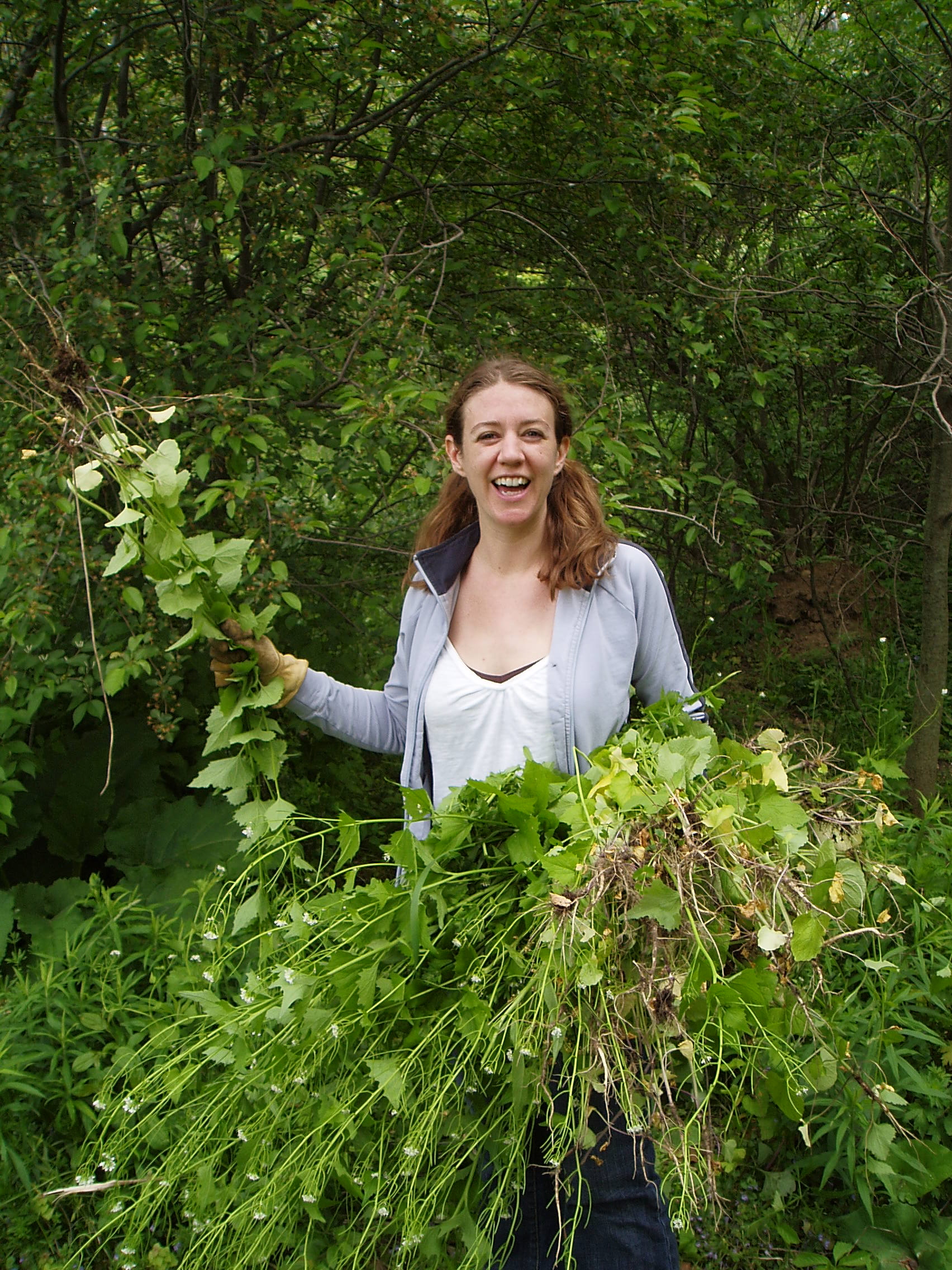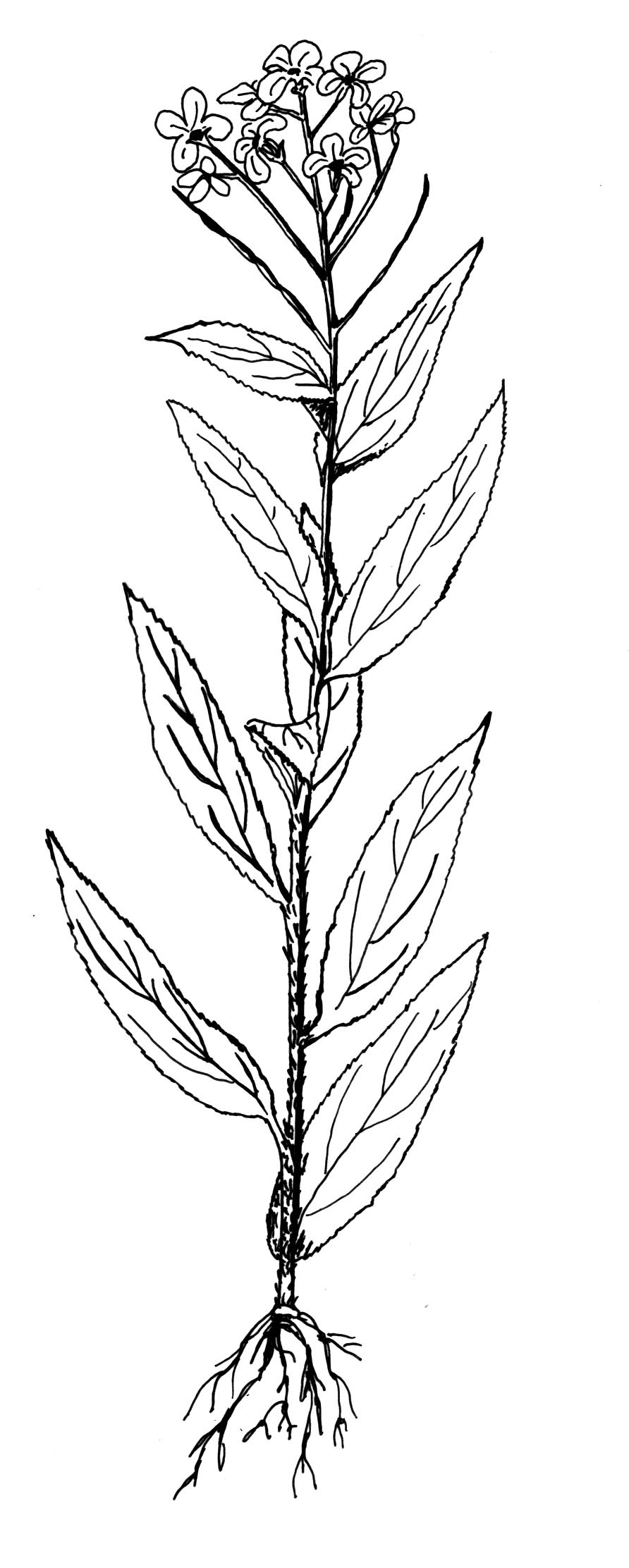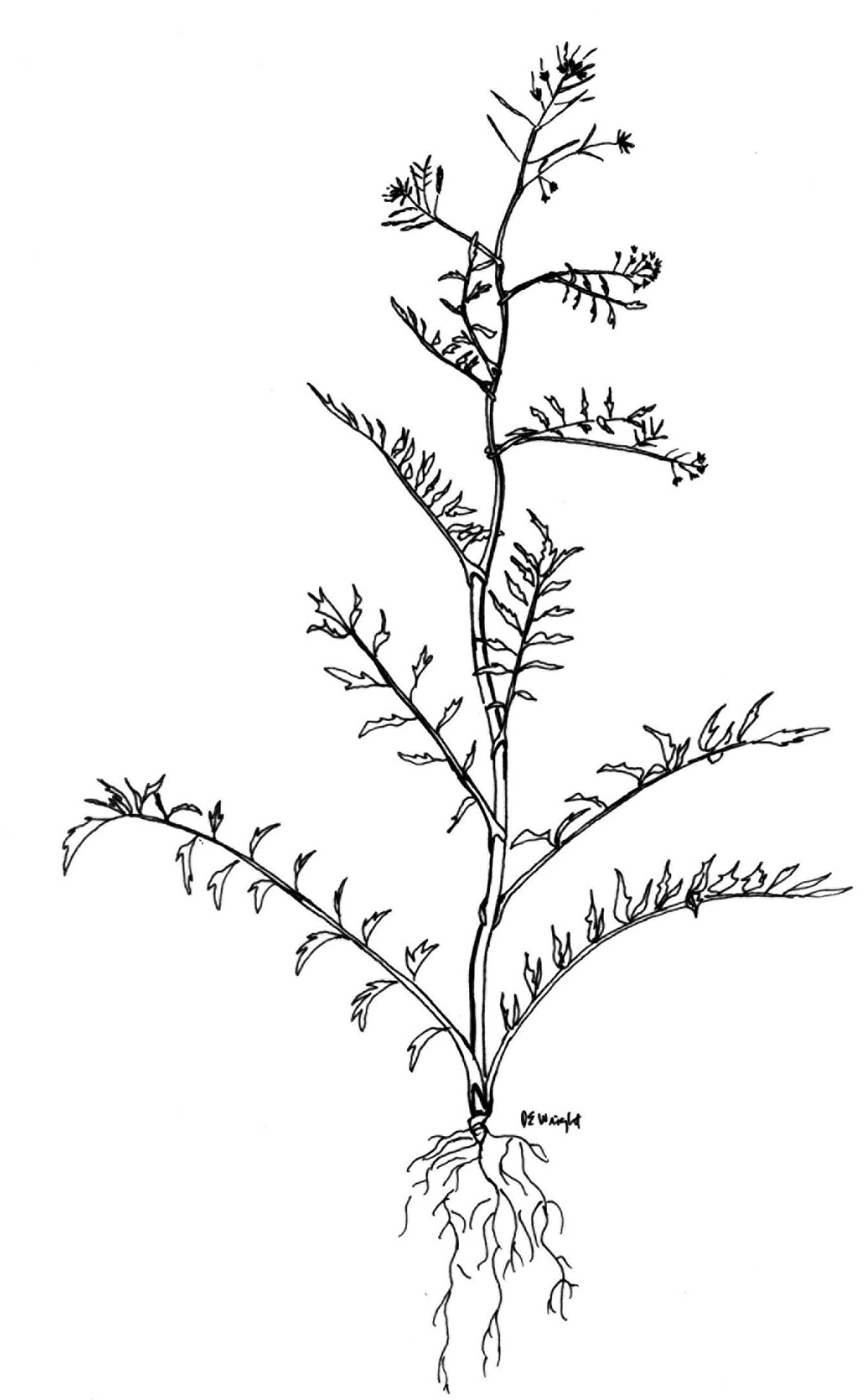
Garlic Mustard Weed Out - at Home!
NAP is no longer hosting a virtual spring invasive pull - but that doesn't mean you can't have your own pulling fun! Aggressive non-native plants never take a break from spreading and outcompeting native plants. A reduction in native plants and wildflowers also reduces the diversity of native wildlife, from small mammals to beautiful butterflies. There is a small seasonal window for targeting these types of invasive plants: warm enough for plants to emerge but not too late or seeds will be spread.
Spending time in nature is a great way to safely and comfortably be outside while still remaining distanced from others. Caring for local habitats instills a sense of home and community as well as a chance to learn more about the small world we live in together. Even though we are no longer hosting this pulling event, we are always working to make Ann Arbor a more beautiful place for everyone! Be sure to follow us on Facebook
@ann.arbor.nap for updates and more!
When?
Anytime during spring months.
Where?
Pull in your own backyard, or talk to your neighbors about planning your own neighborhood event.
How?
First, be prepared! Grab a tote bag, garbage bag, or other carrying device with you to remove the invasive plants. Dress in long pants thick enough to stand up to thorns, brush, poison ivy, ticks, and mosquitos (leggings aren’t very protective); closed-toe shoes that can stand up to mud; gardening gloves; a face mask/cover; and clothes you don’t mind getting dirty.
Second, look for these spring invasive plants!
Garlic Mustard (Alliaria petiolata)

In the mustard family, Brassicaceae.
Biennial. First-year plants grow as a rosette that can get up to 6 inches tall and can remain green throughout the winter. In their second year, they develop into mature flowering plants.
Grows 1-4 feet tall.
Stems purplish at the base and appear hairless but sometimes have sparse hairs, each plant has 1-2 unbranched stems.
Leaves are rounded heart or kidney-shaped with scalloped edges 2 to 4 inches in diameter first year. Second year they are alternate, coarsely toothed, and 2-4 inches in diameter wide and long, becoming smaller and more triangular towards the top. They are not noticeably fuzzy or hairy and attach to the hairy stem on a long slender petiole (½ to 2 inches long), thus the name “petiolata”.
Flowers are white with four petals in the shape of a cross that are mainly clustered at the top of the stem. Each flower is 1/3 to ¼ inch in size. Bloom April through June.
Seeds grow in slender green siliques or skinny pods 1-3 inches long, each containing an average of 16 small, black, oblong seeds. Siliques turn tan and papery into the fall.
Gives off a distinct garlic or onion odor when crushed, thus “Alliaria” from the onion genus. Just below the root crown, the slender taproot has a distinct S-curve.
Dame’s Rocket (Hesperis matronalis)

-
In the mustard family, Brassicaceae.
-
Looks similar to native phlox, but has 4 petals instead of 5 and is typically much taller. Thus the saying, “petals 4 pull some more, petals 5 keep alive.” Also, phlox species have opposite leaves that are not toothed (Dame’s rocket has alternate, toothed leaves).
-
Biennial or short-lived perennial. First-year plants grow as a rosette that can remain green throughout the winter. Second-year plants bolt into a single flowering stalk (raceme).
-
Grows 2-5 feet tall.
-
Stems purplish at the base and densely hairy (especially in the lower plant) with little branching at the base but branching at the top.
-
Leaves are alternate, hairy, toothed with teeth pointing toward the tip of the leaf, lance-shaped, have pointed tips, and a distinct light green midrib. They are larger at the base of the stem (up to 6 inches long and 2 inches across). Leaves have a short to no leaf stalk (sessile or with a very short petiole) which is shorter further up the stem and two points, or “thumbs” where they attach to the stem. The base is well-rounded or wedge-shaped but does not extend beyond the petiole or stem.
-
Flowers are showy and have four petals: white, pink or purple and loosely clustered in large groups of up to 30 flowers at the top of a single stalk. Each flower is ¾-to-1 inch is size, with large clusters and a sweet fragrance strongest in the evening. Bloom late-May through July.
-
Seeds develop into long, narrow pods 2-4 inches long and noticeable from mid-to late summer, green early on and turning tan and papery as they mature with many small, black, oblong seeds. Almost identical to Garlic Mustard Seed Pods.
Narrow-leaf Bittercress (Cardamine impatiens) 
- In the mustard family, Brassicaceae.
-
Biennial. First-year rosette does not produce flowers. Second-years bolt and flower on an erect stem.
-
Grows up to 2 feet tall.
-
Stems purplish at the base and hairless with one main stem producing flowers.
-
Leaves are arranged alternately along the stem and are compound. A leaf can have up to 9 pairs of leaflets.
-
Flowers are tiny and white to greenish, found in small clusters averaging ½ inch across at the top of the plant. Bloom May to August.
-
Seeds develop in slender, stalked fruits that are about an inch in length, each containing 10-24 seeds. Very similar to Garlic Mustard and Dame’s Rocket seed pods but much shorter.
-
To distinguish narrowleaf from other bittercresses, look for two smalls spurs where the leaf base (petiole) extends slightly around the main stem, giving it a clasping appearance. When the leaf is detatched from the stem these lobes remain.
Make sure you pull the entire plant, root and all. If roots are left behind, they can re-sprout in the soil. Once the plants are pulled, place them into a garbage bag or other bag you have at home. Once your bag(s) are filled, take them home for proper disposal:
City-collected compost bin
City-collected trash bin
Call NAP if either of the options above does not work for you.
Do NOT place these plants in home compost piles – they do not get hot enough to kill weed seeds!
Third, after you’ve pulled to your heart’s content, don’t forget to report your efforts here in Ann Arbor to The Stewardship Network Spring Invasive Species Challenge. Please enter NAP in the “Affiliation" box and input the address where you pulled when you record your efforts. The Stewardship Network is a non-profit organization focused on fostering collaborative conservation, and we have partnered with them to track Ann Arbor's information. By reporting how much you've pulled, you help us to not only see our collective impact across the globe, but also to track these important ecological practices closely here in Ann Arbor!
Fourth, be safe! Follow the guidelines set fourth by the Governor and the Center for Disease Control:
-
Stay at least 6 feet apart from any person that is not part of your household. GMWOW is not a group event, it is intended for individuals and single families.
-
Do not share gloves, bags, snacks, or anything else with any person that is not part of your household.
-
Do not touch any plants that have been pulled by someone outside of your household.
-
If you feel sick, stay home.
-
Avoid touching your eyes, nose, or mouth with unwashed hands.
-
If you’re stopping to pull plants, enjoy the birds, wildflowers, or just the beautiful weather – watch your footing, try not to trample vegetation, and carefully move 6 feet off the trail to allow other park users to pass at a safe distance.
General Field Safety
-
Be aware of uneven footing, rocks, slopes, and slippery terrain. Keep an eye out for branches, thorns, and fallen trees caught in the canopy (don’t stand under them!)
-
Familiarize yourself with Poison Ivy. Please refer to Michigan State University’s poison ivy web page for more details.
-
Check yourself for ticks with 24 hours of leaving the park (or your yard!) We have a variety of tick species here in Washtenaw County, including the black legged tick that can transmit Lyme Disease. Be aware of insects when in the field: bees, wasps, mosquitos, etc. Try using bug spray.
-
Stay inside if there is a thunderstorm or heavy winds. Still come on out if it is just raining!
-
Stay hydrated and protected from the sun. Bring a water bottle with you and consider sunscreen. Do not overexert yourself. Have fun!
Thank you!
Share this opportunity with your friends and neighbors but keep in mind this is an individual activity! Stay updated through our Facebook and Twitter. NAP appreciates any time you spend removing invasive plants from your yard and/or city-owned nature areas!
What else can I do?
-
After visiting an area that has invasive weeds present, clean up before you leave the site. Make sure your clothes, boots, vehicles, and pets are seed free.
-
Use plants native to southeastern Michigan in your yard and garden.
- Follow us on Facebook @ann.arbor.nap for more updates and opportunities!
